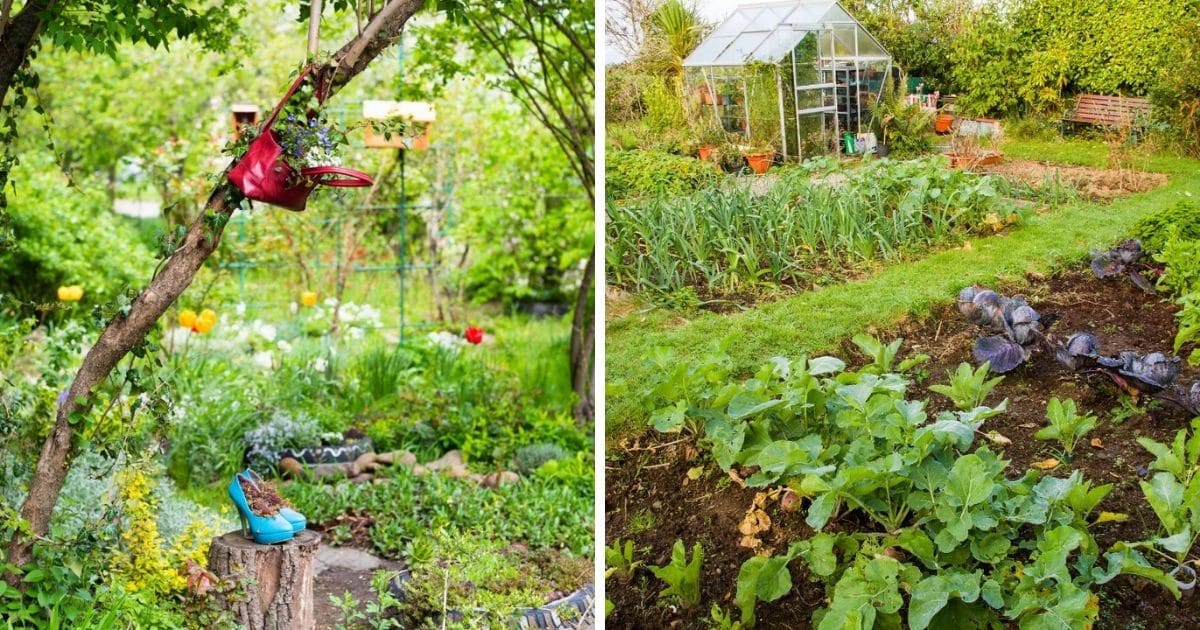Organic Gardening And Sustainable Practices Website
Welcome to the world of organic gardening and sustainable practices! Are you ready to embark on a journey that promotes healthy living and helps protect our planet? Well, you’ve come to the right place! Our organic gardening and sustainable practices website is a one-stop destination for all your eco-friendly gardening needs.
Whether you’re a beginner looking to learn the basics or an experienced gardener seeking new techniques and tips, our website has got you covered. We understand that gardening is not just about growing plants; it’s a way of life that nurtures both the body and the soul. And that’s exactly what we’re here to help you achieve.
At our website, you will find a treasure trove of resources that will inspire and guide you on your organic gardening journey. From articles on soil health and natural pest control to step-by-step guides on creating your own compost and designing sustainable landscapes, we offer a wide range of valuable information. So, let’s join hands and make our gardens greener, one plant at a time!

Creating an Organic Gardening and Sustainable Practices Website
Organic gardening and sustainable practices have gained significant popularity in recent years, with more people embracing the idea of growing their own food in an environmentally-friendly manner. As a result, there is a growing need for informative and engaging websites that provide guidance on organic gardening and sustainable practices. In this article, we will explore the essential elements of creating an organic gardening and sustainable practices website that is both educational and visually appealing. From choosing the right design and content to optimizing for search engines, we will cover everything you need to know to make your website a valuable resource for gardening enthusiasts.
The Importance of User Experience
When designing an organic gardening and sustainable practices website, it is crucial to prioritize user experience. Your website should be easy to navigate, visually appealing, and loaded with valuable content. The first impression is everything, so make sure your homepage is aesthetically pleasing and showcases the essence of organic gardening. Incorporate high-quality images of lush gardens, vibrant fruits and vegetables, and happy gardeners. Consider using a clean and modern design that aligns with the principles of sustainability.
The Importance of Responsive Design
Nowadays, people access the internet from various devices, including smartphones, tablets, and laptops. Therefore, it is essential to create a website with a responsive design that adapts seamlessly to different screen sizes. A responsive website ensures that your content is easily accessible to users regardless of the device they are using. This not only enhances the user experience but also improves your website’s search engine rankings, as search engines prioritize mobile-friendly websites.
When designing your website, consider using responsive design frameworks like Bootstrap or Foundation. These frameworks provide pre-built templates and components that automatically adjust based on the user’s screen size. Additionally, ensure that your images are optimized for different devices to minimize load times and improve the overall browsing experience.
Furthermore, it is crucial to test your website’s responsiveness across multiple devices and screen sizes. This will help identify any issues and allow you to make necessary adjustments to ensure a seamless user experience for all visitors.
Creating Engaging and Informative Content
One of the key aspects of a successful organic gardening and sustainable practices website is the quality and relevance of the content. Your website should provide a wealth of information, tips, and resources that educate and inspire gardeners. Consider including content such as step-by-step gardening guides, tips for composting, information on natural pest control methods, and profiles of organic gardening success stories.
When writing your content, keep in mind the target audience: gardening enthusiasts with varying levels of experience. Use simple language, avoid jargon, and provide clear and concise instructions. Break up text with headings, subheadings, and bullet points to improve readability. Incorporate high-resolution images and videos to enhance the visual appeal and make the content more engaging.
You can further enhance the user experience by incorporating interactive elements into your website. For example, include a forum or community section where users can ask questions, share experiences, and connect with other gardeners. This fosters a sense of community and encourages users to return to your website for ongoing support and inspiration.
Optimizing for Search Engines
While creating informative and engaging content is essential, it is equally important to optimize your organic gardening and sustainable practices website for search engines. This will help your website rank higher in search engine result pages, driving more traffic and increasing your visibility.
Start by conducting keyword research to identify relevant keywords related to organic gardening and sustainable practices. These keywords should be incorporated naturally throughout your website’s content, including headings, subheadings, and meta tags. However, avoid keyword stuffing, as search engines penalize websites that engage in this practice.
Additionally, focus on building high-quality backlinks from reputable websites in your niche. Backlinks are a crucial ranking factor for search engines, as they indicate that your website is a trusted and authoritative source of information. Reach out to other gardening websites, blogs, and influencers and offer to contribute guest posts, share resources, or collaborate on content.
Designing a Sustainable Website
A sustainable website aligns with the principles of organic gardening and sustainable practices, both in terms of design and functionality. Here are three essential elements to consider when designing a sustainable website:
Eco-Friendly Hosting
Choose a web hosting provider that runs on renewable energy or invests in carbon offset programs. Green web hosting providers use renewable energy sources like wind and solar power to power their servers. This reduces the carbon footprint associated with hosting your website and contributes to a more sustainable internet.
Optimized Performance
A sustainable website should load quickly to minimize energy consumption. Optimize your website’s performance by compressing images, minifying files, and utilizing caching techniques. This not only reduces load times but also reduces the amount of data that needs to be transferred, resulting in a greener website.
Additionally, choose a content delivery network (CDN) that utilizes edge servers strategically placed around the globe. CDN ensures that your website’s content is delivered from a server nearest to the user, reducing the distance data needs to travel and further optimizing performance.
Reduce Resource Consumption
When designing your website, make conscious efforts to reduce resource consumption. Minimize the use of plugins and scripts that are not integral to the functionality of your site. Opt for clean and lightweight code to minimize server load and improve energy efficiency.
Furthermore, consider implementing a sustainable approach to website updates. Rather than constantly launching large updates that require significant resources, adopt an iterative approach by making smaller, more frequent updates. This allows for easier maintenance, reduces server strain, and contributes to a more sustainable website.
Conclusion
Creating an organic gardening and sustainable practices website requires careful consideration of both design and content. Prioritizing user experience, creating engaging and informative content, and optimizing for search engines are crucial steps to ensure the success of your website. Additionally, designing a website with sustainability in mind contributes to a more environmentally-friendly internet. By following these guidelines, you can create a valuable resource that inspires and educates gardeners on organic and sustainable practices.
Key Takeaways: Organic Gardening and Sustainable Practices Website
- Organic gardening refers to growing plants without the use of synthetic fertilizers and pesticides.
- Sustainable practices promote environmental stewardship and conserving natural resources.
- An organic gardening and sustainable practices website provides valuable information on how to grow plants naturally and sustainably.
- They offer tips on composting, companion planting, and using natural pest control methods.
- Visiting such a website can help you learn how to create a healthy and eco-friendly garden.
Frequently Asked Questions
Welcome to our Organic Gardening and Sustainable Practices website! Below are answers to some common questions to help you get started on your sustainable gardening journey.
1. How can I start an organic garden?
To start an organic garden, begin by preparing the soil. Remove any weeds and amend the soil with organic matter like compost or well-rotted manure. Choose organic seeds or transplants, and select plants that are suited to your region’s climate and sunlight conditions. Practice regular watering and mulching to maintain moisture levels and prevent weed growth. Lastly, avoid synthetic pesticides and fertilizers, opting instead for organic alternatives.
Remember to rotate your crops each season, as this helps prevent the buildup of pests and diseases. Embrace natural pest control methods such as companion planting, introducing beneficial insects, and using organic pest repellents. Regularly monitor your garden for any signs of issues and address them promptly with organic solutions.
2. What are the benefits of organic gardening?
Organic gardening has numerous benefits. Firstly, it promotes healthier soil by preserving its natural fertility and structure. This not only improves plant growth but also enhances the ecosystem by supporting beneficial microorganisms and earthworms.
Secondly, when you garden organically, you minimize the use of synthetic chemicals, reducing the risk of harmful effects on your health and the environment. Organic practices also contribute to biodiversity conservation and help protect pollinators, such as bees and butterflies. Additionally, the fruits and vegetables grown organically are often more nutritious and flavorful.
3. How can I conserve water in my garden?
To conserve water in your garden, adopt water-wise practices. Start by adding organic matter to the soil, as it helps retain moisture. Mulching around your plants can significantly reduce evaporation and keep the soil moist for a longer time.
Consider using drip irrigation or soaker hoses instead of overhead sprinklers. These methods deliver water directly to the roots of your plants, minimizing water loss through evaporation and ensuring efficient usage. Additionally, watering in the early morning or late afternoon helps reduce water loss due to evaporation during the hottest part of the day.
4. How can I attract beneficial insects to my garden?
Attracting beneficial insects to your garden is key to maintaining a healthy and balanced ecosystem. Plant a variety of flowering plants and herbs that provide nectar and pollen, such as lavender, marigold, and dill. These plants will attract beneficial insects like ladybugs, lacewings, and bees.
Having a diversity of plants will also attract a range of insects, which will help control pest populations naturally. Avoid using chemical pesticides, as they can harm both beneficial insects and pests. Creating habitats like bug hotels, birdhouses, and water features can further encourage beneficial insects, birds, and other wildlife to visit your garden.
5. How can I make my garden more sustainable?
To make your garden more sustainable, practice composting to recycle your kitchen scraps and yard waste. Compost adds valuable nutrients to the soil and reduces the need for synthetic fertilizers.
Choose native plants that are well-suited to your area’s climate and require less water and maintenance. Implement rainwater harvesting systems by collecting rainwater in barrels or installing a rain garden to capture and store excess water. Use natural pest control methods, conserve water, and embrace organic gardening principles to minimize your impact on the environment and create a sustainable garden.

How to be an ORGANIC GARDENER: 7 Tips for Success
Summary
Want to learn about organic gardening and sustainable practices? Check out our website! We provide easy-to-understand information for beginners. Discover how to grow your own food while protecting the environment. Our articles cover topics like composting, natural pest control, and soil health. Learn how to create a sustainable garden that benefits both you and the planet. Join our community of eco-conscious gardeners and start your green journey today. Happy gardening!
